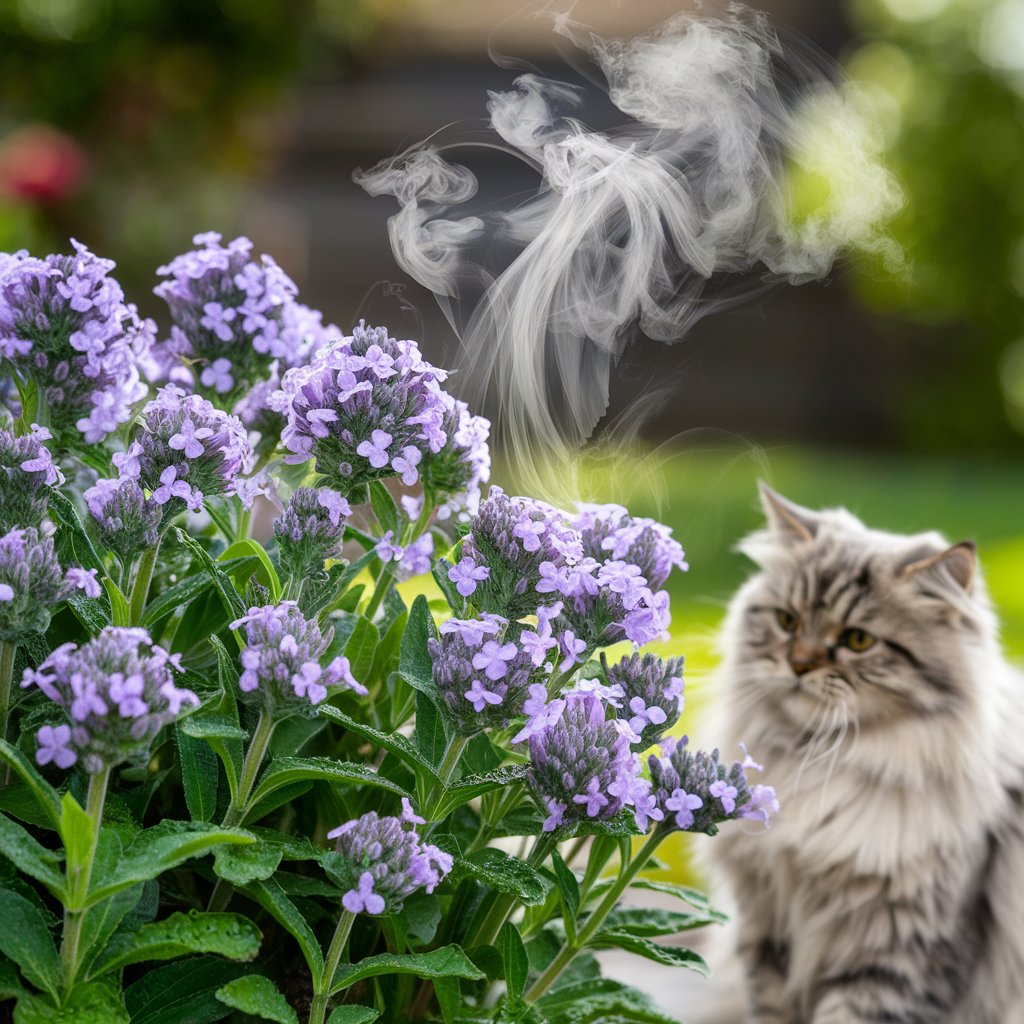Reasons To Interact With Your Cat
Contents
Reasons To Interact With Your Cat
Reasons To Interact With Your Cat: Playing enhances your bond with your cat. Playing with your cat is the finest method to strengthen your friendship.
Do you want your cat to perceive you as more than just a source of food, shelter, and warmth?
If this is the case, regular play sessions will help your cat recognise you as the object of his affection and greet you when you return home.
Allow your cat to believe that your hands are toys. If your cat learns that it’s acceptable to scratch or bite your hands, it’ll take the devil to break her of the habit.
Playing with your cat will help keep him from growing overweight.
Eating a decent and balanced diet is the most excellent method to keep your cat from becoming overweight, but exercise also plays a role in keeping your feline healthy.
If your cat is a house cat, playing with you may be their only source of exercise. But don’t overdo it, and keep playtime to approximately 15 minutes.
Playing allows your cat to gain confidence.
Kittens learn how to connect with their siblings and other cats through play; they find their position in the world through social education. Playing with your cat will aid in his learning process.
Regular play sessions paired with caressing will acquaint your cat with human interaction, making him less inclined to hide and shrink away when visitors arrive.
Playing allows your cat to hone her hunting skills.
All cats have an inherent instinct to hunt. A cat only kept indoors has little chance to act out and develop this instinct.
Spend some time playing with an interactive cat toy, such as a catnip on a string.
Encourage your cat to chase the mouse and pounce on it for the kill.
Maintain a wide selection of cat toys, but only use three or four at a time, and engage your cat with a different selection the following time. Keep some toys for play sessions to keep your cat interested, and put them away in between.
Toys like catnip mice can be safely left out for your cat’s amusement, but keep in mind that cats can and will consume small items.
Never encourage children to play with buttons, strings, bells, or other similar items.
Playing assists your cat in releasing aggression.
Cats frequently exhibit violent behaviour when bored. When you play with your cat, teach him not to scratch, bite, or attack you. When your cat plays softly, praise her, and stop the game as soon as she signs of wanting to use her teeth or claws.
This will teach your cat that aggressive behaviour should be focused on her toys rather than on you!
Your kitty enjoys playing!!!
Cats, like people, require entertainment throughout their lives. Add some fun to your cat’s life to break up the routine of eating, sleeping, and using the litter box.
Your cat will be happier, more confident, and less aggressive.
Playing is enjoyable for you!
Finally, playing with your cat is enjoyable for you as well. A cat is an excellent pet to keep around to enjoy its beauty and keep it company.
Introduce your children to a cat.
Are cats and children compatible?
So your family has owned a cat since you were a child. And bringing a cat into your home would be an excellent way to educate your children about the joys of being around animals.
You are most likely correct.
However, just because you have great recollections of growing up with a loving cat does not guarantee that everything will always go smoothly.
They will undoubtedly be enthusiastic about the prospect but ensure they understand that caring for a living creature entails joy and responsibility.
Prepare to assume all responsibility for caring for the household cat. When children are old enough, they can and should be taught to do some of the tasks, but if they lose interest, it is up to you.
Set up a space where your cat can go when it doesn’t want children’s attention (or adults).
A room or location where your cat can be alone when he feels the need can help to maintain harmony.
Children must be informed about the sharpness of a cat’s claws and fangs to avoid terrible experiences! Explain that cats may bite or scratch when upset, agitated, or overstimulated.
Kittens are not the most excellent choice for small children. A youngster may not comprehend how delicate a kitten is and how an overly affectionate embrace could injure the creature.
A kitten may also be less tolerant of a child’s fast movements and joyous yelling than an adult cat. An older cat, at least two years old, is more likely to accept a toddler’s attention quietly and is undoubtedly more robust than a kitten.
Show your youngsters how to hold a cat appropriately. Show them how to take up a kitten gently, one hand on the chest and the other on the rear legs.
Children and cats can form powerful bonds that teach them love and respect for animals that will continue for the rest of their life. Teaching your children the fundamentals of pet interaction will benefit them for many years.





I found your insights on interacting with cats quite engaging, particularly the emphasis on play as a means to strengthen the bond between owner and pet. However, I’d like to explore some nuances regarding the implications of allowing cats to use our hands as toys and how we can enhance our playtime practices.
You bring up a really interesting point about the dynamics of playtime with our cats, especially when it comes to using our hands as toys. There’s a fine line there, right? While it can feel super engaging to let them pounce on our fingers, it often results in some pretty intense play sessions that can lead to scratches or bites.
You’ve brought up a really interesting point about using our hands as toys when interacting with cats. It’s certainly a common practice, but it does come with some nuances to consider. Many people enjoy that playful interaction, and while it might seem harmless, it can lead to some unintended consequences, especially regarding boundaries. Cats often interpret our movements as signals to pounce, and if we inadvertently encourage them to see our hands as something to attack, it can create a blurred line between play and aggression.
You’ve highlighted an important aspect of cat behavior that often flies under the radar. When I first adopted my cat, I noticed how easy it was to slip into that playful interaction, especially since he had so much energy. It was all fun and games until I realized he was starting to associate my hands with something to attack. It really shifted my understanding of playtime.
You’re totally on point with that observation. It’s like your little furball takes a field trip through the land of “my hands are for wrestling,” and suddenly, what was a peaceful moment involves dodging sharp claws like you’re in some sort of feline Olympics. I’ve been there, too. You start off thinking you’re just having a cute little play session, and ten minutes later, you feel like you’re in an action movie, trying to avoid those little furry ninja moves.
Your experience perfectly captures a common challenge for many cat owners. It’s easy to get caught up in the fun of playtime, especially when your cat is full of energy and ready to pounce. But as you found out, it’s important to pay attention to how those playful interactions shape their behavior over time.
It’s fascinating how those early days of adopting a cat can really shape our understanding of play. I completely get what you’re saying about the shift in perspective once you realize that playful interactions can influence their behavior. Our furry friends often don’t have the same boundaries we do, and they can take cues from us in ways we might not expect.
You’ve highlighted a really important aspect of cat behavior, and it’s so true that the way we interact with them can shape their understanding of play. I’ve noticed that when I use my hands too much during play, my cats could end up getting a bit overzealous, and then it becomes a challenge to redirect that energy later on.
You raise some great points about using hands in play with cats. It’s definitely a nuanced topic. On one hand, allowing our feline friends to play with our hands can sometimes create a false notion that it’s okay to bite and scratch us, which isn’t ideal for building a mutually respectful relationship. I’ve had to be mindful of this with my own cat; he loves to play rough, but I’ve learned to redirect that energy towards toys instead.
You make a solid point about the challenges of playing rough with our cats. It’s interesting how easy it is to slip into those playful bites and scratches without realizing they’re setting the wrong tone. Redirecting that energy to toys is such a smart move. I’ve noticed that a good wand toy can really tap into a cat’s hunting instincts, plus it keeps your hands safe while giving them the workout they crave.
It’s great to hear that you’ve had a positive experience with wand toys too. They really do harness that primal hunting instinct in cats, don’t they? I’ve found that even just a short session with a wand toy seems to really satisfy their needs for both mental and physical stimulation. It’s interesting how quickly cats can pivot from rough play to something enjoyable and targeted.
You’ve captured the essence of wand toys perfectly. It’s remarkable to see how these simple tools can tap into those natural instincts. I’ve noticed, too, that a short play session really seems to refresh and enrich my cats’ day. The way they switch from that intense hunting behavior to curling up contently afterward is fascinating.
You really hit on something important about the tone we set when playing with our cats. It’s so easy to forget that they may see those playful bites and scratches as a part of their interaction, but for us, it can become a bit much. I’ve found that wand toys can be a great way to channel that energy into something both fun and beneficial for them. It’s fascinating to watch how their instincts kick in—it really feels like a mini-hunting session for them.
You’ve hit on an important aspect of cat play that a lot of people overlook. It’s fascinating how much our cats can mirror our actions, and it’s true that using our hands can create mixed signals. Redirecting their energy to toys is such a smart move—it not only keeps your cat engaged but also keeps those hands safe.
You’ve touched on such an important aspect of cat behavior and play. It’s interesting how our interaction style can really shape their understanding of boundaries. I also have a cat who can get quite enthusiastic during playtime. I’ve found that redirecting that play onto toys not only helps prevent those unwanted bites and scratches, but also gives them an outlet for their natural hunting instincts.
You raise a great point about the implications of allowing cats to see our hands as toys. While it can seem playful at first, this behavior may encourage some undesirable habits, such as biting or scratching during play. Instead, using toys—like feather wands or laser pointers—can help protect our hands and keep playtime fun and safe.
You make such a valid observation about how engaging in play with our hands can lead to those biting and scratching habits. I’ve definitely experienced that with my own cat, who sometimes sees my fingers as part of the action. It’s interesting to think about how our play behaviors can shape their instincts long-term.
It’s really cool to hear you relate to that! Cats are such clever little critters. When we play with them using our hands, they can start to see our fingers as part of the game, which can definitely lead to those nips and scratches. It’s fascinating how their instincts kick in during playtime. In the wild, their hunting practice would involve pouncing on moving objects, so when we wiggly our hands around, it might trigger that playful predatory response they have.
You’ve touched on a really important aspect of our interactions with pets. It’s fascinating how what we might see as harmless play can influence their behavior in surprising ways. When we wave our hands around or use our fingers to entice them, it can easily send mixed signals. For many cats, those little grabs and nibbles can feel like an invitation to join in the fun. I can definitely relate to your experience—there’s a certain thrill in the spontaneous moments when a cat pounces on your fingers, but it’s also a reminder of how our actions can inadvertently encourage habits we might not want.
I’m glad you found the discussion on play engaging. The point about using hands as toys is a thoughtful one. While it may seem fun at first, allowing cats to see our hands as playthings can lead to some tricky habits, like biting or scratching. It can blur the lines for them between what’s okay to play with and what’s not.
You bring up a really important point about how our interaction with our cats shapes their behavior. It’s interesting how playful engagement can sometimes backfire. It reminds me of a few pet training workshops I’ve attended where they emphasized the importance of establishing boundaries in play. Balancing fun with proper play etiquette seems essential to avoid those biting and scratching habits that can develop.
You know, that discussion about play reminds me of how intriguing wall-mounted play setups can be; they really provide a way to engage our cats without risking those tricky biting habits that can come from hand play.
‘The Ultimate Guide to Wall-Mounted Play’
https://unitypets.com/the-ultimate-guide-to-wall-mounted-play/.
You raise some interesting points about allowing cats to use our hands as toys. It’s definitely a nuanced topic. On one hand, it can feel playful and engaging when a cat swats at your fingers or playfully claws at your hand, but there are some long-term implications to consider.
Playing with cats is like joining a furry circus, where you risk becoming the main act caught in a whirlwind of paws and playful chaos! I totally agree with the importance of interactive play to build that special bond. My cat, Sir Whiskers-a-lot, now seems to think my shoelaces are long-lost adversaries, and man, he is relentless!